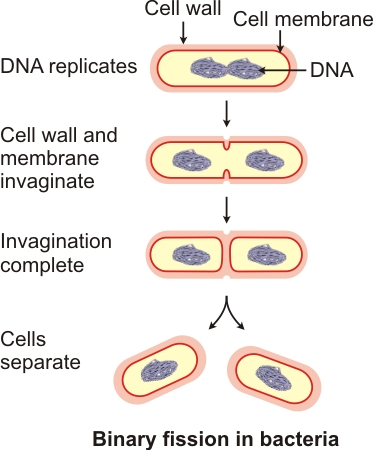

In bacteria the division of the mother cell into two daughter cells of approximately the same size is the rule. Fission consists in the splitting of the mother cell into two or more daughter cells. Cell organelles like mitochondria and chloroplasts divide by binary fission which gives the basis for the Endosymbiotic theory, which explains that the prokaryotes have evolved into the present-day mitochondria.The most common means of vegetative reproduction in bacteria is cell division or fission.īacteria multiply by this method when there is sufficient amount of water, fair supply of nutrients and favourable temperature.The process of binary fission in these cells is the same as that of prokaryotes involving the FtsZ protein.Although most of the eukaryotes undergo sexual reproduction, some protozoans like amoeba reproduce by binary fission and cell division in some organelles within the eukaryotic cells occurs in a similar bacteria-like fashion.Crenarchaeota having neither a cell wall nor the FstZ protein, however, utilizes a primitive mechanism involving different proteins called the ESCRT-III system.Finally, the septum divides itself to form two independent cells.Now, for the division of the cytoplasm, the membrane pinches inwards forming a septum (new cell wall) forms down the middle of the cell.This process is essential to ensure that the division splits the cytoplasm and doesn’t damage the genetic material.One of the essential proteins in this process is the FtsZ protein which forms a ring-like structure at the center of the cell.Once the replication is completed, different types of proteins working as cell division machinery assemble at the future division site (at the center of the cell).The origin then divides, and as the replication continues, the two origins move towards opposite ends of the cell, pulling the chromosomes with them. The chromosomes then undergo replication starting from a point in the chromosome called, the origin of replication.Before binary fission, unlike human cells in which the genetic material is present inside a nucleus, the genetic material of the prokaryote (chromosomes) is present in a specialized region of the cell in the cytoplasm as a nucleoid.Steps/Process of Binary Fission Binary fission in prokaryotesįigure: Binary fission in prokaryotes. In order to remain viable and competitive, a bacterium must divide at the right time, in the right place, and must provide each offspring with a complete copy of its essential genetic material.Some cell organelles like mitochondria also undergo cell division by the process of binary fission.Binary fission is the mode of reproduction in many prokaryotes including, archaea, cyanobacteria, eubacteria, and some eukaryotes like amoeba and Paramecium.Because binary fission is a type of asexual reproduction, the daughter cells formed have the same genetic material as their parent cell.This form of reproduction is called asexual as the process doesn’t involve the formation or fusion of gametes.


Binary fission differs from other types of fission in that only two parts are formed from a single entity.Binary fission is a type of asexual reproduction where a single living cell or an organelle grows twice its size and then splits into two identical daughter cells, where each of these daughter cells has the potential to grow into the size of the original cell or organelle.


 0 kommentar(er)
0 kommentar(er)
